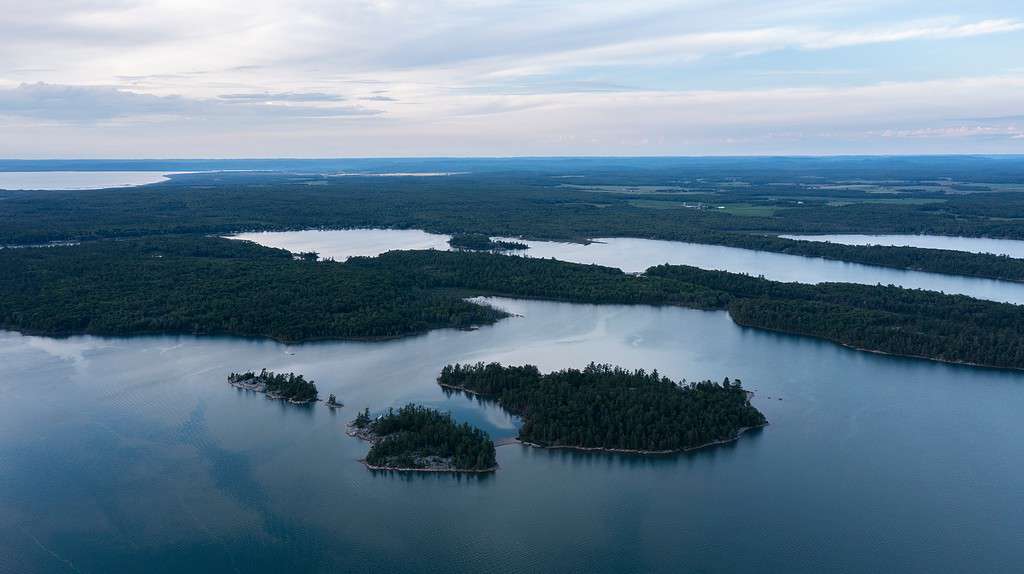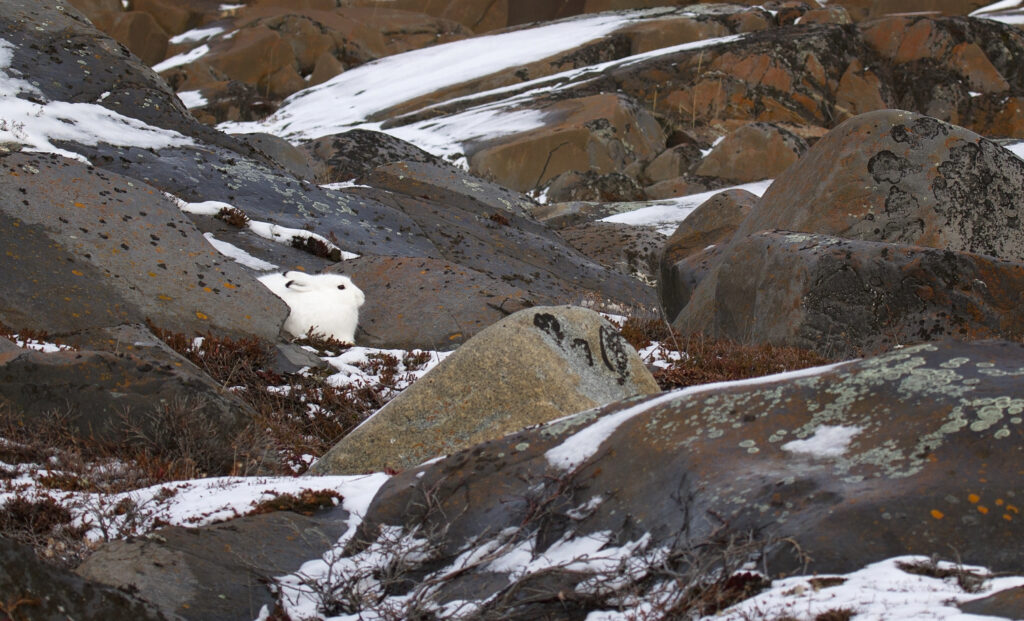Canada is known for its vast landscapes and diverse climates. But it also experiences some of the most extreme weather conditions in the world. Among these weather phenomena, strong winds play a significant role. From coastal regions battered by oceanic gusts to prairie areas known for their relentless breezes, Canada showcases a wide range of wind patterns. In this article, we explore the top 10 windiest places in Canada, delving into the factors that make them so windy, the impact of wind on the local environment, and how residents cope with these natural forces.
Introduction To Wind
Wind is the movement of air from high-pressure areas to low-pressure areas. It is a natural and dynamic component of Canada’s climate. It shapes the landscape, influences weather patterns, and, in some regions, defines the residents way of life. Understanding the windiest places in Canada requires considering various factors, including geography, topography, and proximity to major bodies of water.
Factors Contributing to High Windiness
Before diving into the list of the windiest places in Canada, it’s essential to understand the factors that contribute to high wind speeds. These factors are geography, proximity to water, presence of topography, such as mountain passes and other geographical features, and climate systems.
Canada’s vast landmass contains several diverse geographical features, from mountains and valleys to plains and coastlines. Each type of terrain can affect wind patterns differently. Cities that are located near large bodies of water, such as oceans or the Great Lakes, often experience higher wind speeds due to the interaction of land and water.
When it comes to topographical features, wind can accelerate as it funnels through mountain passes and valleys, resulting in strong gusts in these areas. Narrow geographical features, like straits and canyons, can also funnel air and intensify wind speeds. Climate patterns, such as polar air masses colliding with warm air masses, can also generate strong winds.
The Top 10 Windiest Places in Canada
Let’s explore the 10 windiest places in Canada, ranked in increasing order by their average annual wind speeds, and gain insights into what makes them exceptional.
1. St. John’s, Newfoundland and Labrador

A panoramic image of The Battery community in St John’s harbour, Newfoundland, Canada.
©Doug Gordon/Shutterstock.com
Average Wind Speed: Approximately 24.3 kilometers per hour (15.1 miles per hour)
Geographical Features: St. John’s, the capital of Newfoundland and Labrador, is located on the northeastern coast of the island of Newfoundland. Its proximity to the North Atlantic Ocean exposes it to very strong coastal winds.
Wind Characteristics: St. John’s experiences powerful winds throughout the year, but the winter months can be particularly fierce. Consequently, combination of cold Arctic air and relatively warm ocean waters contributes to these high wind speeds.
Impact: The strong winds in St. John’s can affect daily life, from transportation disruptions to property damage. However, they also contribute to the area’s rugged beauty and make it a popular destination for storm watchers.
2. Cape St. Mary’s, Newfoundland and Labrador

Aerial drone view of St. Mary’s River between Lake Superior and Lake Huron with water channels passing through landscapes between Canada and The Unites States of America. Islands between countries.
©Cory Woodruff/Shutterstock.com
Average Wind Speed: Approximately 26.5 kilometers per hour (16.5 miles per hour)
Geographical Features: Cape St. Mary’s is located on the southern tip of the Avalon Peninsula in Newfoundland and Labrador. It’s an exposed coastal area and therefore, has little to break the force of the prevailing winds from the Atlantic Ocean.
Wind Characteristics: Cape St. Mary’s experiences some of the strongest winds in eastern North America, especially during winter storms. The combination of its coastal location and proximity to the open ocean, therefore, results in consistently high wind speeds.
Impact: The winds at Cape St. Mary’s shape the landscape and influence the local ecosystem. Birdwatchers flock to the area to witness the dramatic flight of seabirds during the powerful updrafts.
3. Whitehorse, Yukon

Indian Teepees under the northern lights in Whitehorse, Yukon (Canada)
©Cristina Ramos Hernando/Shutterstock.com
Average Wind Speed: Approximately 27.6 kilometers per hour (17.2 miles per hour)
Geographical Features: Whitehorse is the capital of Yukon and is situated in a valley surrounded by mountains. While not on the coast, it also experiences strong winds due to its unique topography.
Wind Characteristics: Whitehorse is known for its windy conditions during the winter months. The city’s location in a valley can funnel winds through the area, increasing their intensity.
Impact: The winds in the city can make the cold winters feel even more biting. Residents cope by dressing warmly and ensuring their homes are well-insulated to minimize heat loss.
4. Calgary, Alberta

Beautiful Calgary city skyline from scotsman’s hill on a sunny day, Canada
©TRphotos/Shutterstock.com
Average Wind Speed: Approximately 28.8 kilometers per hour (17.9 miles per hour)
Geographical Features: Calgary is located in Alberta, near the eastern foothills of the Canadian Rockies. Similar to Whitehorse in Yukon, it experiences strong winds due to its proximity to the mountains and prairies.
Wind Characteristics: Calgary’s winds are influenced by its geography. Chinook winds, warm and dry air masses, can bring rapid temperature fluctuations and strong winds to the city.
Impact: The Chinook winds in Calgary can lead to dramatic temperature swings, sometimes melting snow and causing discomfort. However, they are also celebrated for providing relief from the cold Alberta winters.
5. Grand Prairie, Alberta

A top view of a curved river in northern alberta, canada.
©wonganan sukcharoenkana/iStock via Getty Images
Average Wind Speed: Approximately 29.6 kilometers per hour (18.4 miles per hour)
Geographical Features: Grand Prairie is located in northwestern Alberta, and as the name suggests, is surrounded by flat prairies and agricultural land. Its geography contributes to its windy conditions.
Wind Characteristics: Grand Prairie experiences strong winds, particularly in the spring and fall. The flat terrain allows winds to sweep across the area with little obstruction.
Impact: Windy conditions in Grand Prairie can impact outdoor activities and construction projects. Residents often adapt by securing outdoor items and dressing warmly during windy days.
6. Churchill, Manitoba

The coast of the Hudson Bay in Manitoba, Canada.
©critterbiz/Shutterstock.com
Average Wind Speed: Approximately 30.8 kilometers per hour (19.1 miles per hour)
Geographical Features: Churchill is located on the shores of Hudson Bay in northern Manitoba. Its remote coastal location exposes it to powerful Arctic winds.
Wind Characteristics: As mentioned before, Churchill experiences harsh winter winds, driven by the cold Arctic air masses that sweep across the region. The combination of frigid temperatures and strong winds can create bitterly cold wind chill values.
Impact: The extreme cold and strong winds in Churchill require residents to take precautions, such as dressing in layers and minimizing outdoor exposure during severe weather.
7. Regina, Saskatchewan

Aerial of Legislative Building, Regina, Saskatchewan, Canada
©Russ Heinl/Shutterstock.com
Average Wind Speed: Approximately 31.7 kilometers per hour (19.7 miles per hour)
Geographical Features: Regina is the capital of Saskatchewan and is located on the flat prairies of the Canadian Plains. Its geographical features contribute to its windy conditions.
Wind Characteristics: Regina experiences consistently high winds, particularly during the spring and summer months. The flat terrain allows winds to sweep across the region with little obstruction.
Impact: Strong winds in Regina can affect outdoor activities, from sports events to gardening. However, residents are accustomed to windy conditions and often plan outdoor activities accordingly.
8. Barrie, Ontario

Beautiful landscape of Lake Superior northern shore from above in Ontario, Canada.
©Elena Elisseeva/Shutterstock.com
Average Wind Speed: Approximately 33.0 kilometers per hour (20.5 miles per hour)
Geographical Features: Barrie is situated on the western shore of Lake Simcoe in Ontario. Its location near a large body of water contributes to its windy conditions.
Wind Characteristics: Barrie experiences strong winds, particularly during the winter months when cold air masses move across the relatively warmer lake waters, creating lake-effect snow and winds.
Impact: The lake-effect winds in Barrie can lead to heavy snowfall and challenging driving conditions. Residents can stay prepared for these winter challenges by using snow tires and practicing safe driving in snowy conditions.
9. Winnipeg, Manitoba

Lake Winnipeg is the third-largest freshwater lake that is only in Canada
©lastdjedai/Shutterstock.com
Average Wind Speed: Approximately 34.4 kilometers per hour (21.4 miles per hour)
Geographical Features: Winnipeg, the capital of Manitoba, is located near the confluence of the Red and Assiniboine Rivers. Its location in the Canadian Prairies exposes it to strong winds.
Wind Characteristics: Winnipeg experiences windy conditions, particularly during the winter months. This is because the flat terrain allows for the unobstructed flow of cold Arctic air, resulting in strong winds.
Impact: The winter winds in Winnipeg can make the already cold weather feel even more biting. Therefore, residents rely on warm clothing, well-insulated homes, and vehicles with block heaters to cope with the climate.
10. Hamilton, Ontario

A closeup shot of a pier on the Lake Muskoka in Ontario, Canada
©Light and Vision/Shutterstock.com
Average Wind Speed: Approximately 36.2 kilometers per hour (22.5 miles per hour)
Geographical Features: Hamilton is located on the western tip of Lake Ontario, making it prone to lake-effect winds and weather patterns.
Wind Characteristics: The city experiences strong winds, especially during the winter months. The interaction between cold Arctic air and the relatively warmer waters of Lake Ontario can result in powerful lake-effect snow and winds.
Impact: The lake-effect winds in Hamilton can lead to snowfall and hazardous driving conditions. Residents should stay prepared for winter weather and they usually are; they often adapt their travel plans accordingly.
Summary Table of Top 10 Windiest Places in Canada
| Rank | Location | Average Wind Speed (km/h) | Average Wind Speed (mph) |
|---|---|---|---|
| 1 | St. John’s, NL | 24.3 | 15.1 |
| 2 | Cape St. Mary’s, NL | 26.5 | 16.5 |
| 3 | Whitehorse, YT | 27.6 | 17.2 |
| 4 | Calgary, AB | 28.8 | 17.9 |
| 5 | Grand Prairie, AB | 29.6 | 18.4 |
| 6 | Churchill, MB | 30.8 | 19.1 |
| 7 | Regina, SK | 31.7 | 19.7 |
| 8 | Barrie, ON | 33.0 | 20.5 |
| 9 | Winnipeg, MB | 34.4 | 21.4 |
| 10 | Hamilton, ON | 36.2 | 22.5 |
Conclusion
Canada’s top 10 windiest places showcase the country’s climatic diversity and the impact of geography, topography, and proximity to water bodies on wind patterns. From coastal cities battered by oceanic winds to prairie towns enduring relentless gusts, each of these windy places has its unique story to tell.
Understanding the windiest places in Canada also highlights the resilience of its residents who have adapted to these natural forces. Whether it’s the storm watchers of St. John’s, the Chinook-wind watchers of Calgary, or the snow-savvy citizens of Hamilton, all Canadians embrace the wind in all its forms, living with it and making it an integral part of their lives.
The photo featured at the top of this post is © Alena Charykova/Shutterstock.com
Thank you for reading! Have some feedback for us? Contact the AZ Animals editorial team.







